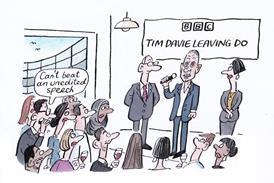 Sponsored content
Sponsored content
Rawnet’s ONE platform is a flexible way for content distributors to drastically improve how they screen, engage and connect with buyers

Having spent the last 10 years working with some of the world’s top television distributors, it’s safe to say we’ve attended our fair share of MIPTV & MIPCOM events.
What hurts us most is the continued lack of efficiency encountered when we dig deep into the various sales processes on each stand.
What we’re going to do here is look at the worst-case scenario from our perspective, outlining the same behaviour we see before, during and after the event. If you can draw comparisons with some of this then we can assure you there is a better way!
Before the event
With only a few weeks to go, sales teams will be busy arranging appointments in preparation for the event and, in our experience, already facing their first challenge; the largely disjointed manner in which meetings are booked.
The booking process is logged via a multitude of channels (phone, text, email etc). It’s a sporadic process and time wasted on admin drains the productivity of the best of salespeople. These meetings then have to be logged in diaries, email calendars & CRMs, which often results in extra time spent on admin, inconsistencies logging information and, inevitably, mistakes.
Fast forward to a few days before MIP. Sales teams will be travelling to Cannes from across the world and likely finalising preparations for their pre-booked meetings – preparing lists for VIPs, making notes against buyers.
As we’re all painfully aware, internet connectivity can be pretty unreliable when trying to connect on the move. The inability to work offline is a frustratingly frequent barrier to efficient preparation, especially when considering teams flying over from the US or Asia – a flight with dodgy wifi could decimate a whole day’s work.
We estimate that an individual sales person should be aiming for a minimum of ten meetings a day for the duration of MIP, with each meeting catering to different buyers with different requirements.
Sales people are fantastic at understanding their buyers and building great relationships. but are still mainly reliant on previous buying behaviour and intuition. Something which still remains a challenge for the majority of sales teams is tracking online buyer activity, which programmes buyers like and dislike, and using those insights to tailor an informed content list and conversation at MIP.
Key challenges before MIP
- Disjointed meeting booking process
- Too much time spent on admin
- No offline working capability
- Limited insights on buyer behaviour
During the event
Unfortunately, the challenges from before the event inevitably leak into the actual meeting. Having to spend time searching often complex CRMs, programme lists and diaries before each buyer arrives is a frustrating way to absorb precious time, especially considering the back-to-back 30 minute meeting slots so common at MIP.
It’s no secret that, while technology has positively evolved the sales playing field, the digital era has made it more difficult for us to stay focused.
While this is a bleak statistic, it really highlights the importance of keeping meetings slick and efficient. An exploratory conversation is the norm in a buyer/sales introduction, but the time it can take is a challenge to efficiency when already condensing a year’s worth of content into a 30-minute slot. Similarly, while other processes such as note taking are vital for engaging follow up content, it’s also a sure fire way to divert the buyer’s attention from the actual content you’re showcasing and distract from a meaningful conversation.
Key challenges during MIP
- Meeting efficiency
- Complex CRMs
- No ability to screen content
After the event
Finally, meeting follow up. After an average of 40-50 meetings, sales have the mammoth task of compiling notes into CRMs, sending the right screeners to the right buyers, reporting back to management and forecasting off the back of their conversations. Every single one of these seemingly simple tasks currently poses challenges to a large number of sales teams.
Key challenges after MIP
- Sending screeners to buyers
- Reporting back to management
- Forecasting for Sales Leadership
Pointing out these challenges is easy, we’re merely stating the obvious, but there is a better way! What if we told you that we had a B2B system for both sales and marketing teams that solved every one of the challenges described?
ONE was designed with three people in mind; your buyers, your sales teams and marketing function. Our continuous learnings at market have allowed us to evolve and refine it into a highly efficient tool. Don’t take our word for it, watch the video to find out how we can revolutionise the way you do business
Come and meet us at MIP or visit us at www.rawnet.tv




























